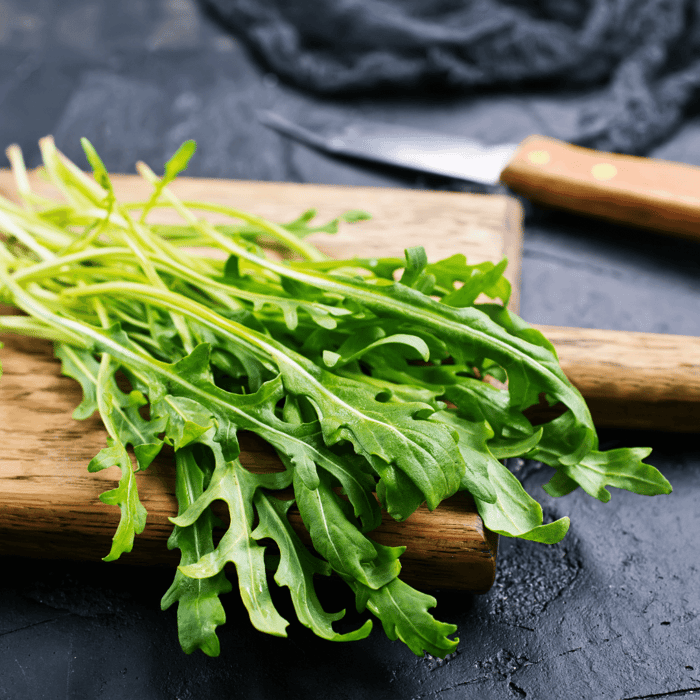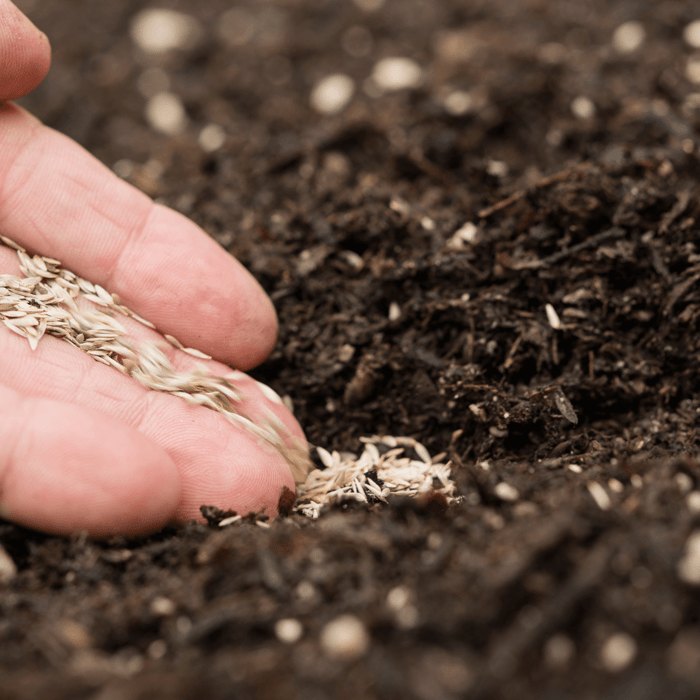Hello, fellow garden enthusiasts! As an avid gardener, I can't get enough of growing my own leafy greens, and arugula is one of my favorites. Arugula, also known as Eruca vesicaria, is a fantastic addition to any salad, providing a unique peppery flavor. As a member of the mustard family, arugula has a rich history and a plethora of culinary uses. In this in-depth guide, we will go through everything you need to know about growing this scrumptious green in your garden. So, learn how do you grow arugula in a garden!
1. Choosing the Right Arugula Seeds
First things first, you'll want to find some high-quality arugula seeds to start your garden. Arugula comes in various cultivars, including wild, rocket, and even heat-tolerant varieties. Head over to our Gardener's Basics website to browse our collection of herb seeds, and be sure to check out their roquette arugula seeds for a heat-tolerant variety that will thrive in your garden.
Roquette Arugula Seeds
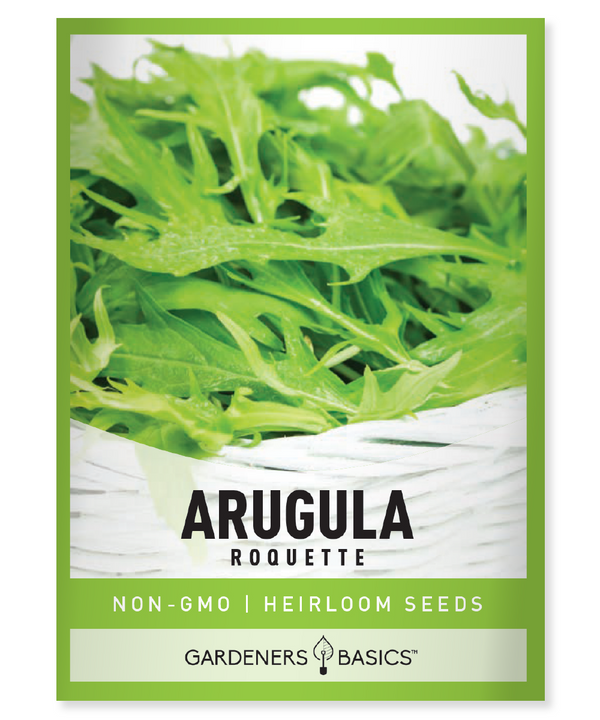
$2.49
Roquette Arugula Seeds - Heirloom, Non-GMO, Non-Hybrid, Open-Pollinated Elevate your garden and culinary creations with Roquette Arugula Seeds, a premium heirloom variety that delivers a peppery, tangy flavor perfect for fresh salads, sandwiches, and garnishes. These high-quality, non-GMO, non-hybrid, open-pollinated… read more
2. Preparing the Soil
Arugula grows best in well-drained soil with a pH level between 6.0 and 7.0. Here are a few steps to prepare the soil for planting:
- Test your soil's pH using a soil test kit, and adjust the pH level accordingly
- Loosen the soil to a depth of 8-10 inches
- Mix in a 2-3 inch layer of compost to improve soil texture and fertility
- Add a balanced organic fertilizer according to package instructions
- Ensure proper drainage to prevent waterlogging and root rot
3. Planting Arugula Seeds
In early spring, plant your arugula seeds about 1/4 inch deep and 1 inch apart in rows or clusters. Make sure to space the rows about 12 inches apart. Arugula seeds typically germinate within 5-7 days, and you'll start to see those tender leaves emerge. If you want to enjoy successive harvests, consider sowing arugula seeds every 2-3 weeks throughout the growing season.
4. Caring for Your Arugula Plants
Arugula has a shallow root system, which means it requires regular watering to keep the soil evenly moist. Here are some tips to care for your arugula plants:
- Water regularly, but avoid soaking the soil to prevent root rot
- Apply a balanced, organic fertilizer every 4-6 weeks to promote healthy growth
- Mulch around the plants to help retain moisture, suppress weeds, and regulate soil temperature
- Thin seedlings to 6 inches apart for optimal growth and air circulation
5. Sunlight and Temperature Requirements
Arugula prefers cool weather and can handle light frosts. Provide your plants with full sun to partial shade. In hotter climates, plant arugula in an area with afternoon shade to keep the young leaves from wilting. Keep in mind that arugula can bolt, or produce flowers and seeds when exposed to high temperatures. To slow down bolting, choose heat-tolerant varieties and provide shade during hot afternoons.
6. Harvesting Your Arugula
You can begin to harvest your arugula when the leaves reach about 2-3 inches in length. To encourage continuous growth and continue harvesting throughout the season, use the "cut-and-come-again" method. This involves snipping the outer leaves while leaving the inner leaves to continue growing. Regular harvesting will encourage bushier growth and prevent bolting, allowing you to enjoy a more extended harvest season.
Popular Herb Seeds for Planting | 35 Variety Pack
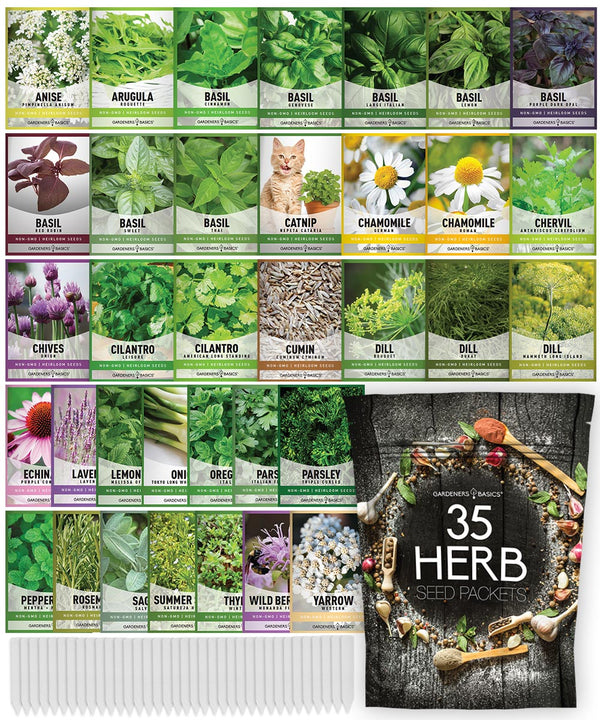
$29.95
$49.95
Heirloom, non-GMO herb seeds for indoor and outdoor home gardens! Introducing our 35 Herb Seeds Variety Pack, the ultimate selection for any herb garden enthusiast! This premium assortment includes heirloom herb seeds that are non-hybrid, open-pollinated, and non-GMO, ensuring you get only… read more
7. Pests and Diseases
Arugula is generally pest-resistant, but flea beetles and aphids can be a concern. To prevent flea beetle damage, use floating row covers or sprinkle diatomaceous earth around your plants. Mild flavored arugula varieties may attract aphids, so monitor your plants and use organic pest control methods as needed, such as insecticidal soap or neem oil. In addition to these common pests, arugula may be susceptible to fungal diseases like downy mildew and powdery mildew. Ensure proper air circulation and avoid overhead watering to minimize the risk of these diseases.
8. Enjoying Your Arugula
Your arugula is now ready to be used in a variety of dishes. As a versatile salad green, arugula pairs well with fruits, nuts, cheeses, and various dressings. You can also add it to sandwiches, and wraps, and even cook it lightly as a side dish. The peppery flavor of arugula makes it a delightful addition to any meal. Here are some recipe ideas to get you started:
- Arugula, pear, and goat cheese salad with a balsamic vinaigrette
- Prosciutto, fig, and arugula flatbread
- Grilled vegetable and arugula panini
- Pasta with lemon, garlic, and arugula
- Pesto made with arugula, basil, and pine nuts
9. Saving Arugula Seeds for Future Planting
If you're interested in saving seeds for the next growing season, allow a few of your arugula plants to flower and produce seed pods. Once the seed pods have dried out, collect them and carefully remove the seeds. Store the seeds in a cool, dry place in a sealed container until you're ready to plant them again.
10. Growing Arugula Indoors
If you don't have space for an outdoor garden, don't worry! Arugula can also be grown indoors in containers. Choose a well-draining potting mix and place your container near a sunny window. Follow the same planting, watering, and harvesting guidelines as you would for outdoor plants. This way, you can enjoy the taste of fresh arugula all year round.
11. Companion Planting with Arugula
Companion planting can offer several benefits to your arugula plants, such as pest control, improved soil fertility, and enhanced flavor. Some good companion plants for arugula include:
Lettuce Seed Assortment | 5 Variety Pack
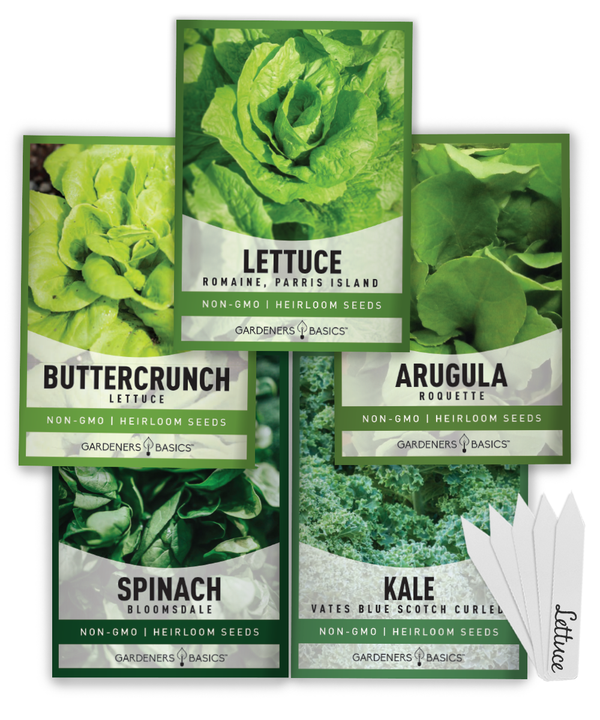
$9.95
Grow Fresh Greens Year-Round with Our 5 Lettuce Seeds Variety Pack - Heirloom, Non-GMO, Perfect for Outdoor & Indoor Gardening Introducing our 5 Lettuce Seeds Variety Pack – the perfect addition to your garden, whether you’re a seasoned grower or… read more
- Lettuce
- Spinach
- Radishes
- Peas
- Carrots
- Onions
- Marigolds
Avoid planting arugula near beans, as they can compete for nutrients and may stunt the growth of your arugula plants.
12. Nutritional Benefits of Arugula
Arugula is not only a delicious and versatile leafy green but also a nutritious addition to your diet. It is low in calories and high in vitamins A, C, and K, as well as minerals like calcium and potassium. The peppery flavor of arugula is due to the presence of glucosinolates, compounds that have been linked to potential health benefits, such as reduced inflammation and cancer prevention.
Conclusion
Growing arugula in your garden is a rewarding experience that adds a burst of flavor to your favorite dishes. By following this in-depth guide, you'll be well on your way to cultivating a thriving arugula patch. Whether you're a seasoned gardener or a newbie, there's nothing quite like the satisfaction of growing your own salad greens. So, grab your gardening gloves, and let's get planting!
Remember, the key to successful arugula cultivation lies in selecting the right seeds, preparing the soil, caring for your plants, and protecting them from pests and diseases. By providing optimal growing conditions and regularly harvesting your arugula, you'll enjoy a bountiful harvest throughout the season. Don't forget to experiment with different arugula recipes and enjoy the nutritional benefits of this flavorful leafy green. Happy gardening!
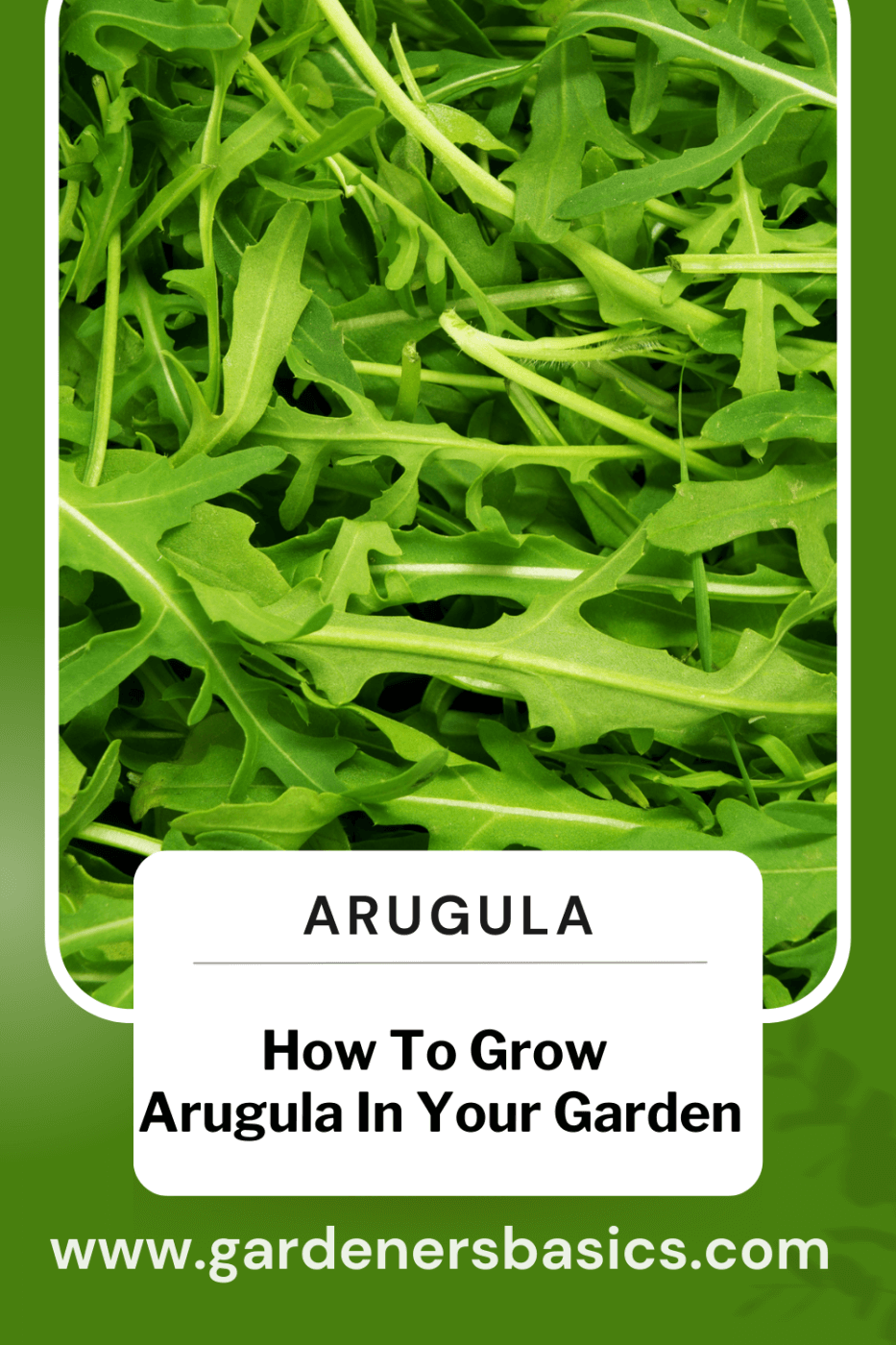
Frequently Asked Questions (FAQ)
Q: How long does it take for arugula seeds to germinate?
A: Arugula seeds typically germinate within 5-7 days, depending on soil temperature and moisture levels.
Q: Can I grow arugula in partial shade?
A: Yes, arugula can be grown in full sun to partial shade. In hotter climates, it's beneficial to provide some afternoon shade to protect the plants from wilting and bolting.
Q: How do I prevent arugula from bolting?
A: To slow down bolting, choose heat-tolerant varieties, provide shade during hot afternoons, and keep the soil evenly moist. Regular harvesting can also help prevent bolting.
Q: Can I grow arugula in containers?
A: Absolutely! Arugula can be grown in containers both indoors and outdoors. Make sure to use well-draining potting mix and place the container in a sunny location.
Q: How do I store arugula seeds for future planting?
A: Store arugula seeds in a cool, dry place in a sealed container to maintain their viability. Be sure to label the container with the seed variety and date of storage.
Q: What are some good companion plants for arugula?
A: Some good companion plants for arugula include lettuce, spinach, radishes, peas, carrots, onions, and marigolds. Avoid planting arugula near beans, as they can compete for nutrients.
Q: How often should I water arugula plants?
A: Arugula plants require regular watering to keep the soil evenly moist. Watering frequency depends on weather conditions, soil type, and plant size. Monitor the soil moisture and water when the top inch of soil feels dry to the touch.
Q: What are the nutritional benefits of arugula?
A: Arugula is low in calories and high in vitamins A, C, and K, as well as minerals like calcium and potassium. The peppery flavor of arugula is due to the presence of glucosinolates, compounds that have been linked to potential health benefits, such as reduced inflammation and cancer prevention.




